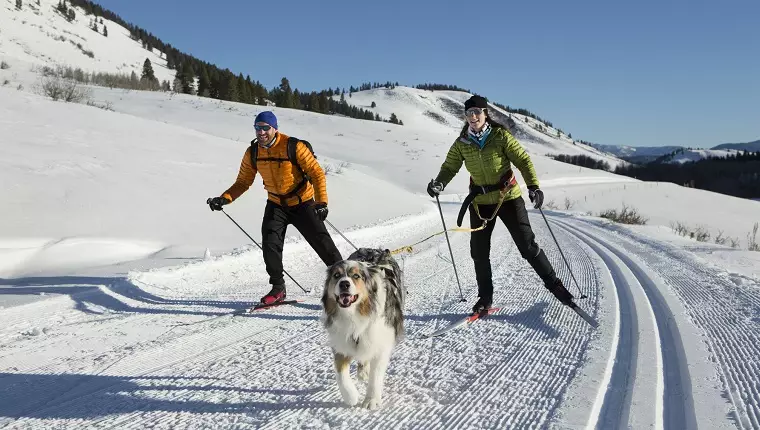As winter settles in, it often leads to a more sedentary lifestyle for both humans and their canine companions. Snowy landscapes can pose unique challenges; however, for those with energetic dogs, winter also opens the door to exciting activities. One increasingly popular winter sport is skijoring, a thrilling combination of cross-country skiing and dog-powered fun that can transform your cold-weather routine into an exhilarating adventure. Originating from Norway, skijoring captures the spirit of outdoor winter sports while fostering a special bond between dog and owner.
So, what exactly is skijoring? Essentially, it involves a dog pulling a skier through snow-covered terrain via a securely attached harness and lead. Unlike dog sledding, where the dogs do most of the work, skijoring calls for active participation from the skier as they maneuver across the snowy trails. This unique setup allows for a dynamic experience where the dog’s enthusiasm propels the adventure and the skier’s skills help manage speed and direction. A blend of balance and technique is critical here; both the dog and skier must be in sync to avoid mishaps characterized by a skier being unexpectedly yanked into a face-first snow dive.
To properly enjoy this winter sport, a background in skiing or skating can be highly beneficial. For instance, skijorer Jill Carter emphasizes that utilizing the skater’s technique—moving side to side while gliding forward—can be an optimal way to manage speed and control. This method is especially useful for keeping up with fast-running dogs and ensuring that both the human and canine enjoy the experience.
Successful skijoring relies heavily on the training of both the skier and the dog. It’s crucial to have a dog trained to follow commands and respond well during runs. Jill Carter notes that having a well-trained dog can significantly enhance the overall skijoring experience. Hence, focusing on training can make a world of difference, as a well-prepped dog will understand how to pull forward while remaining engaged with their human partner.
It’s also worth considering which breed of dog is best suited for skijoring. While almost any healthy dog can participate, certain breeds excel in this activity due to their innate traits. For example, Northern breeds like Huskies, Malamutes, and Samoyeds are naturally drawn to snow and can endure prolonged exercise in chilly conditions. Larger breeds such as American Bulldogs, Mastiffs, and German Shepherds also tend to thrive in skijoring, offering a perfect blend of strength and stamina.
When determining if skijoring is suitable for your dog, it’s imperative to consider their personality and physical capabilities. Smaller breeds or those less accustomed to vigorous activity might not appreciate the exertion involved, and they may prefer less strenuous forms of play. Dogs like Chihuahuas or Shih Tzus might find more joy in being spectators rather than participants in a high-energy sport like skijoring.
Additionally, ensure your pet is comfortable in cold weather before heading out for a brisk skijoring session. Some breeds are naturally more tolerant of the harsh elements, while others may need specific gear to protect them from the cold. Providing jackets or booties can keep your furry friend warm and safe, ensuring a pleasant experience for both parties.
Skijoring can serve as an exhilarating winter activity that strengthens the bond between you and your dog while providing essential exercise when outdoor adventures seem limited. By training your dog and assessing their compatibility with the sport, you can step onto the snowy trail with confidence. So, as winter arrives, consider embarking on a skijoring adventure—it’s a journey filled with joy, excitement, and a unique way to relish the beauty of winter with your four-legged friend. Why not give it a try the next time winter beckons?

